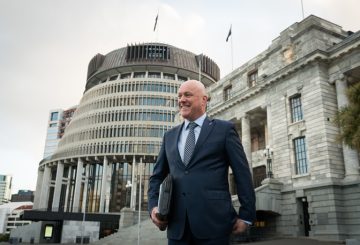Hội đồng Auckland đang tìm kiếm phản hồi của công chúng về kế hoạch dài hạn (LTP) của mình cho đến cuối tháng. LTP vạch ra các mục tiêu của hội đồng trong 10 năm tới, bao gồm cả cách họ lên kế hoạch để đạt được chúng và tài trợ cho chúng. Kế hoạch này được xem xét ba năm một lần, và đánh giá năm nay sẽ đưa ra định hướng của hội đồng từ năm 2024 đến năm 2034.
Hội đồng, do Thị trưởng Wayne Brown lãnh đạo, đã đề xuất một số vấn đề chính cần giải quyết trong LTP. Một trong những cách chính mà hội đồng có kế hoạch tăng thu nhập là tăng lãi suất. LTP hiện tại đề xuất tăng lãi suất để trang trải chi phí tăng, với mức tăng thấp nhất được đề xuất là 5,5% vào năm tới, giảm xuống 3,5% vào năm 2026 và 2027.
Ngoài ra, Brown đề xuất tăng phí nước, nhưng nhằm mục đích giữ cho chúng có giá cả phải chăng bằng cách yêu cầu hỗ trợ của chính phủ. Hóa đơn giá hộ gia đình trung bình có thể tăng từ 3560 đô la lên 3827 đô la và hóa đơn nước từ 1340 đô la lên 1686 đô la, tổng mức tăng tổng cộng là 613 đô la.
Hội đồng cũng có kế hoạch cắt giảm chi phí xung quanh hệ thống vận tải và đường dài của Auckland do quyết định của chính phủ chấm dứt thuế nhiên liệu khu vực. Điều này có nghĩa là sẽ không có tài trợ cho bất kỳ dự án đường bộ mới nào cho đến khi các phương pháp tài trợ thay thế được tìm thấy.
Hội đồng cũng đặt mục tiêu giảm khoản nợ của mình, vốn đã được đẩy lên 290% doanh thu vào năm 2021 do Covid. Mục tiêu dài hạn là giảm tỷ lệ nợ trên doanh thu xuống 270%.
Về kết quả của người Māori, Brown muốn phân bổ thêm 171 triệu đô la, nhưng điều này đi kèm với điều kiện xem xét cách tiền được chi tiêu. Ông nhấn mạnh tầm quan trọng của việc hợp tác với người Māori để mang lại kết quả tốt hơn.
Cuối cùng, kế hoạch đề xuất cắt giảm tài trợ cho tất cả các tổ chức do hội đồng kiểm soát trong ba năm tới, ngoại trừ Watercare và Auckland Transport. Tuy nhiên, Eke Panuku, người quản lý danh mục bất động sản của hội đồng, sẽ phải cắt giảm chi phí.




























































